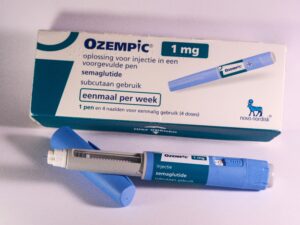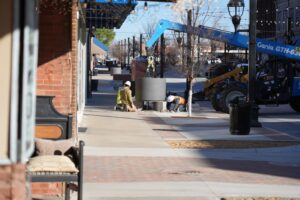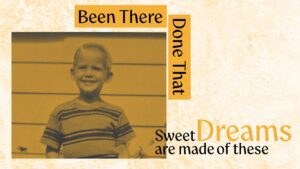It has been scientifically proven that wearing a mask helps stop the spread of COVID-19, and several studies have been performed determining the efficacy of certain materials filtering solid particles. However, there has been scant research to evaluate the effectiveness of different types of fabric blocking ejected droplets from the wearer.
Scientists at Duke University developed a low-cost procedure to quickly test the performance of various face-coverings during speech, sneezing, or coughing.
An operator wears a face mask and speaks into the direction of a laser beam focused through a cylindrical lens inside a darkened enclosure. Droplets that pass through the laser beam scatter the light, which is recorded with a cell phone camera. A computer algorithm is used to count the droplets in the video.
Researchers tested 14 commonly available masks orifice coverings, one swatch of mask material, and a professionally fit-tested N95 mask. For a point of reference, they recorded control trials where the speaker did not wear a protective mask or covering. Each test followed the same protocol. The cell phone camera was used to record a video approximately 40 seconds long to record droplets ejected while speaking. The first 10 seconds of the videos were the baseline. In the next 10 seconds, the person wearing the mask repeated the sentence “Stay healthy, people” five times, after which the camera kept recording for an additional 20 seconds This protocol was repeated 10 times for each mask and control trial. The particle count represents an average involving four speakers wearing the same mask, A fifth speaker wore no mask for the control trial. See figure (a) for the graph showing respective particle counts.
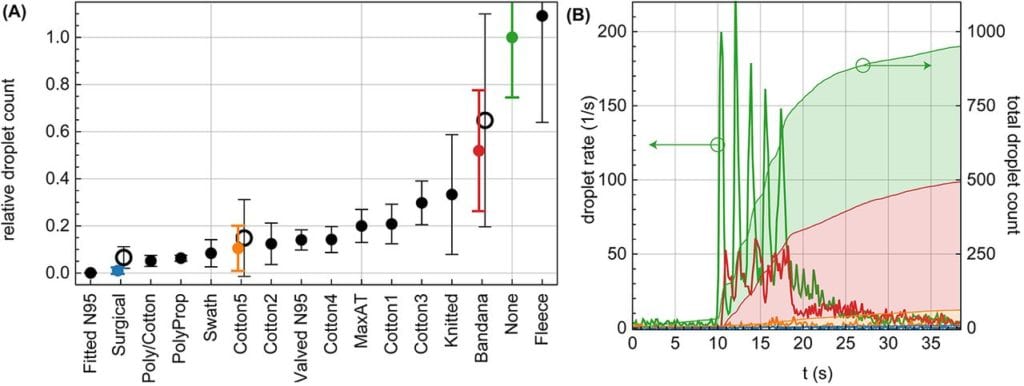
Speaking through a mask is a physical barrier, which results in a reduction of emitted droplets and a significant delay between speaking and detecting particles. The mask smoothes the droplet rate over time and reduces the overall transmission.
The tests showed that speaking through what is referred to as a “Neck Gaiter”, or “Neck Fleece,” seemed to disperse the largest droplets into a multitude of smaller droplets which would account for the apparent increase in droplet count relative to wearing no mask. Considering that smaller particles are airborne longer than large droplets since larger droplets sink faster, the use of such a mask might be counterproductive. Furthermore, the decreased performance of the valved N95 mask is most certainly due to the exhalation valve, which opens for strong outwards airflow. While the valve does not compromise the protection of the wearer, it decreases the protection of individuals surrounding the wearer.
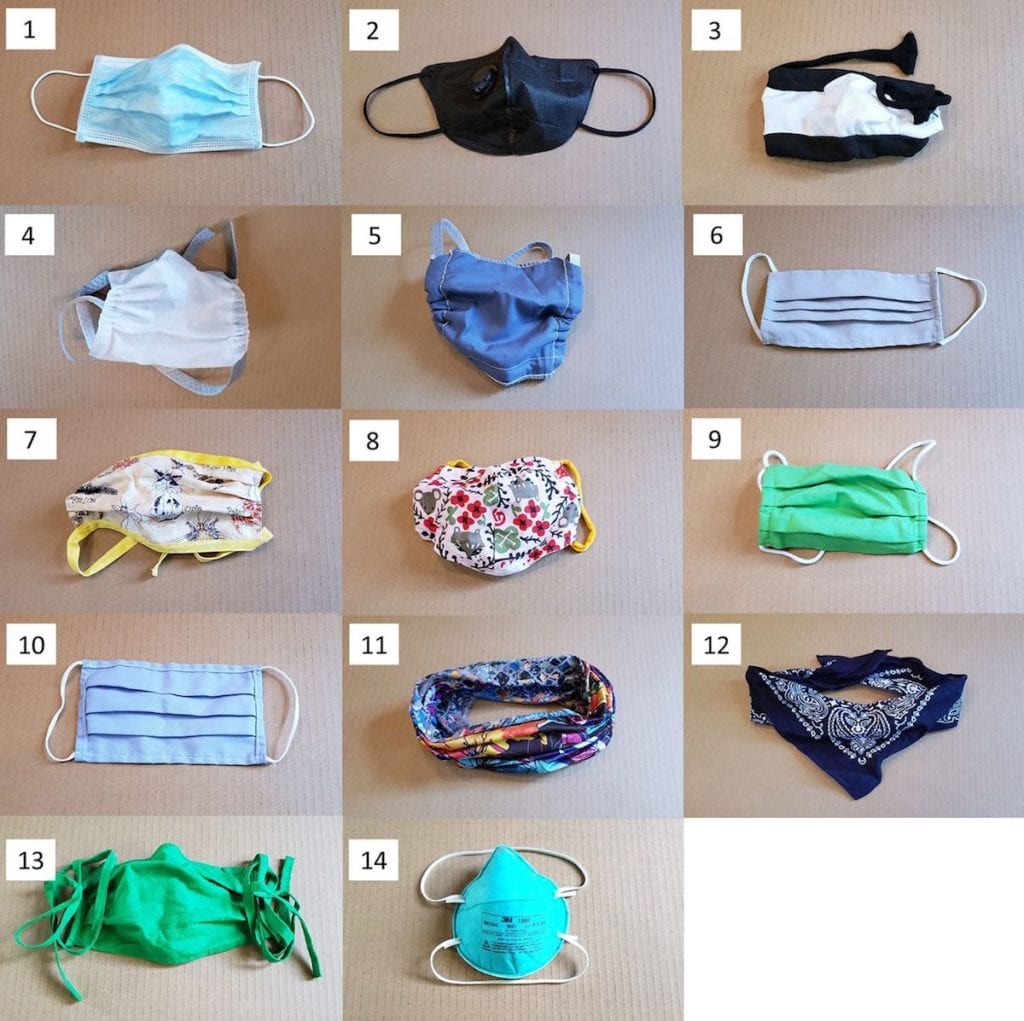
Here is a list of masks identified by a number in parenthesis corresponding to photo.
1. Fitted N95, no valve (14 in photo)
2. 3-layer surgical mask (1)
3. Cotton-polypropylene-cotton mask (5)
4. 2-layer polypropylene apron mask (4)
5. 2-layer cotton, pleated style mask (13)
6. 2-layer cotton, pleated style mask (7)
7. Valved N95 mask (2)
8. 2-layer cotton, Olson style mask (8)
9. 1-layer Maxima AT mask (6)
10. 1-layer cotton, pleated style mask (10)
11. 2-layer cotton, pleated style mask (9)
12. Knitted mask (3)
13. Double-layer bandana (12)
14. Gaiter-style neck fleece (11)




